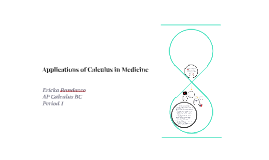

The operation involved exposure and going up through the floor of the bladder. The earliest operation for curing stones is given in the Sushruta Samhita (6th century BCE). Extracorporeal shock wave lithotripsy (ESWL) for removal of calculi.in pickles, salad dressings, sauces, soups, shrubs cocktail) Drinking fluids (water & electrolytes like lemon juice, diluted vinegar eg.Healthy diet & exercise (promotes flow of energy & nutrition).Treatment varies by stone type, but, in general: Modification of predisposing factors can sometimes slow or reverse stone formation. Some stones can be directly recovered (at surgery, or when they leave the body spontaneously) and sent to a laboratory for analysis of content.Laboratory testing can give levels of relevant substances in blood or urine.Factors contributing to stone formation (as in #Etiology) are often tested:.Many stone types can be detected by ultrasound.

Some stone types (mainly those with substantial calcium content) can be detected on X-ray and CT scan.Clinical history and physical examination.Gastric calculi can cause colic, obstruction, torsion, and necrosis.ĭiagnostic workup varies by the stone type, but in general:.Can progress to choledocholithiasis (gallstones in the bile duct) and gallstone pancreatitis (inflammation of the pancreas).Can predispose to cholecystitis (gall bladder infections) and ascending cholangitis (biliary tree infection).Can progress to bladder outlet obstruction.Can predispose to pyelonephritis (kidney infections).Can cause hydronephrosis (swollen kidneys) and kidney failure.Predisposition to infection (often due to disruption of normal flow)Ī number of important medical conditions are caused by stones:.Obstruction of an opening or duct, interfering with normal flow and disrupting the function of the organ in question.Irritation of nearby tissues, causing pain, swelling, and inflammation.Stones can cause disease by several mechanisms: Uric acid is the second most common mineral type, but an in vitro study showed uric acid stones and crystals can promote the formation of calcium oxalate stones. In kidney stones, calcium oxalate is the most common mineral type (see Nephrolithiasis).

A bezoar may form the nidus of an enterolith. Bezoars are lumps of indigestible material in the stomach and/or intestines most commonly, they consist of hair (in which case they are also known as hairballs).Enteroliths are a type of calculus found in the intestines of animals (mostly ruminants) and humans, and may be composed of inorganic or organic constituents.



 0 kommentar(er)
0 kommentar(er)
